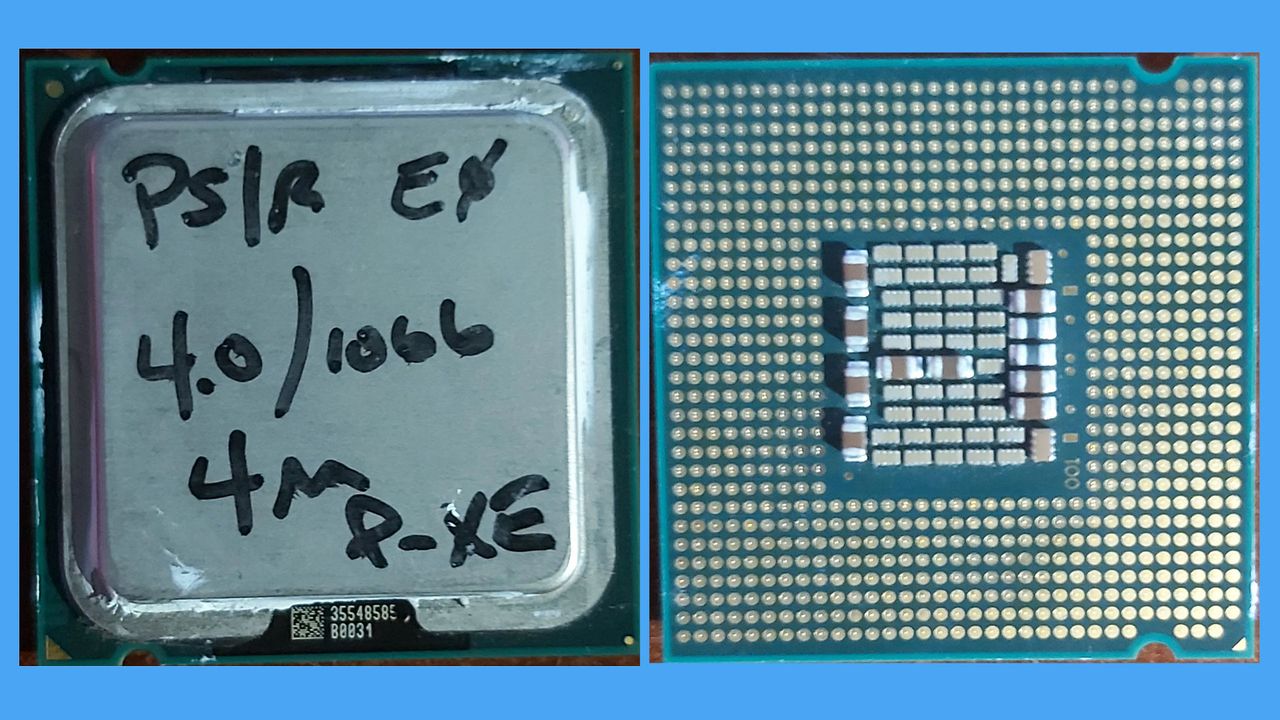
A rare Intel engineering sample from the twilight of the Pentium 4 era has surfaced on social media. We’ve never seen this 4.0 GHz chip before. On Reddit, the current owner of the purported Intel Pentium Extreme Edition 980 processor, diegunguyman, has shared photos of the chip, both front and back, along with a CPU-Z screenshot for some deeper technical details. Due to quirks with the CPU-Z app/online database, this CPU won’t validate correctly.
Found this Intel Extreme Edition 980 Engineering Sample, Anyone have information on it? from r/intel
Diegunguyman reached out on various Subreddits to try and glean more insight into his find. The basic backstory was that “The only text on the CPU itself was written in Sharpie, just the model number and clock speed, 4 GHz.” With no official documentation to reference, the Redditor turned to experts on Subreddits like r/pcmasterrace and r/Intel to seek answers.
A rare breed
This particular dual-core Hyperthreaded ‘Presler’ P4 is a very interesting sample for a number of reasons. Firstly, the collective wisdom of the flock of attentive Redditors interested in this story indicates that the sample now owned by diegunguyman was likely a loaner chip given to an employee.
These Employee Loaner Chips are rarer than typical Engineering Samples (ES). Their rarity is probably bolstered by the strict terms of the loan. However, a purported Intel ‘insider’ on Reddit indicates that due to the extensive layoffs at the firm, policing of the loaner system has evaporated.
Another interesting aspect of this CPU is the reasons that the public never saw with the pinnacle of NetBurst. It is now a matter for the history books, but the processor line already had a poor reputation for its thermals and performance, which played a part.
Pivot: Plan B becomes Plan A
What likely sealed this ‘ghost’ processor’s fate was Intel’s strategic pivot. Management was already shifting focus to the legendary Core 2 lineup, built on the mobile-first Core microarchitecture. Then we saw Intel’s marketing shift to focusing on the entirely reasonable performance-per-watt metric, and the NetBurst design was quickly relegated to history, with budget / entry-level chips being the primary beneficiaries.
It is probably fair to say Intel’s Haifa design team and its mobile-first Core microarchitecture were Intel’s saviors. From mid-2006, the new performance-per-watt tuned chips managed to effectively stall the momentum of AMD’s contemporaneous CPUs like the Athlon 64 and X2 designs on the desktop.
Follow Tom's Hardware on Google News, or add us as a preferred source, to get our up-to-date news, analysis, and reviews in your feeds. Make sure to click the Follow button!







